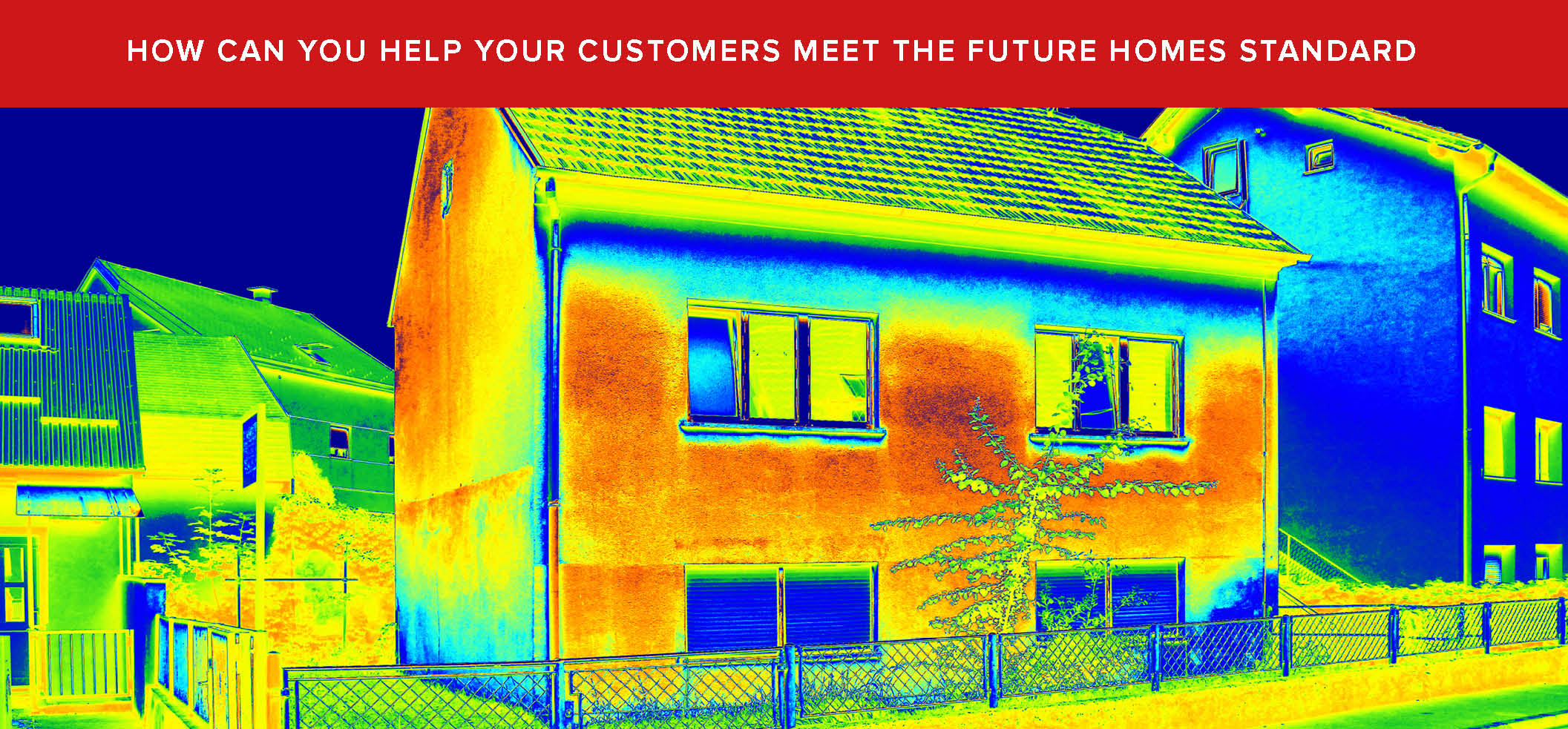
As part of the 2019 Future Homes Standard Consultation views were sought on the use of fabric energy efficiency standards (FEES) as a performance metric. In January 2021 the results were published and it was agreed that FEES would remain but with a view to make the targets are more stringent with proposed amendments to Part L 2021 which is due to be published in December 2021 and come into force June 2022.
When it comes to thermal efficiency and FEES targets our thoughts naturally turn to windows, doors and insulation, however the choice of lintel has a surprising impact too.
Traditional single piece lintels that are often used in the construction of houses allow the transfer of heat to the outside. This is because standard lintels are made from a single piece of highly conductive steel which interrupts the line of insulation in the cavity wall causing thermal bridging. This is where there is a significantly higher heat transfer than the surrounding, insulated elements.
With a typical dwelling having 8-10 windows and two doors, thermal bridging through single-piece lintels can account for around a third of the total heat loss. As such, taking steps to minimise thermal bridging along the lintel can be a very cost-effective and reliable method of working towards meeting the energy efficiency levels set out in the new Future Homes Standard.
Psi Values – How low can you go?
The thermal bridging performance of a lintel is expressed in terms of its Psi value – the lower the Psi value, the better the thermal performance.
Latest generation thermally broken lintels such as our Supatherm range are able to achieve a Psi value of between 0.03 and 0.06.
Energy assessors, when working on a building constructed to Part L Accredited Construction Detail, tend to use an approved value of 0.3W/mK for lintels without a baseplate. In reality, a heat loss of 0.3W/mK makes the assumption that the line of insulation is interrupted with a highly conductive, traditional steel lintel.
However, this does not reflect actual heat loss from latest generation, thermally broken lintels. For instance, even with our 1500mm standard lintel the Psi Value is 0.18 W/mK, although upgrading to our Supatherm lintel at the same length improves thermal performance to 0.043 W/mK.
Replacing a traditional lintel made from a single piece of metal with a thermally broken lintel can therefore cut heat loss through thermal bridging by over 75% and make significant improvements in SAP calculations.
In terms of actual performance, a thermally broken lintel can improve both the dwellings CO2 emission rate (DER) and fabric energy efficiency rate (DFEE) by 3% and 1% respectively. In the case of a small detached dwelling of around 105m² the reduction in heat loss from a thermally broken lintel is equivalent to upgrading from double to triple glazed windows.
Summary
The impact of upgrading to a super-insulated thermally broken lintel is even greater on a larger detached dwelling of 304m², which can mean the cavity wall thickness is reduced from 150 to 125mm. This is another significant saving for builders in terms of insulation and masonry ancillaries. It also avoids the loss of internal living space as wider cavities have a tendency to encroach on the internal footprint.
The standards in energy efficiency for all new buildings, including newly developed homes, become ever stricter. By ensuring a property has thermally broken lintel, developers can make a significant difference to overall performance and take a step towards meeting the Future Homes Standard sooner.
For more information, please contact your local RGB branch.
